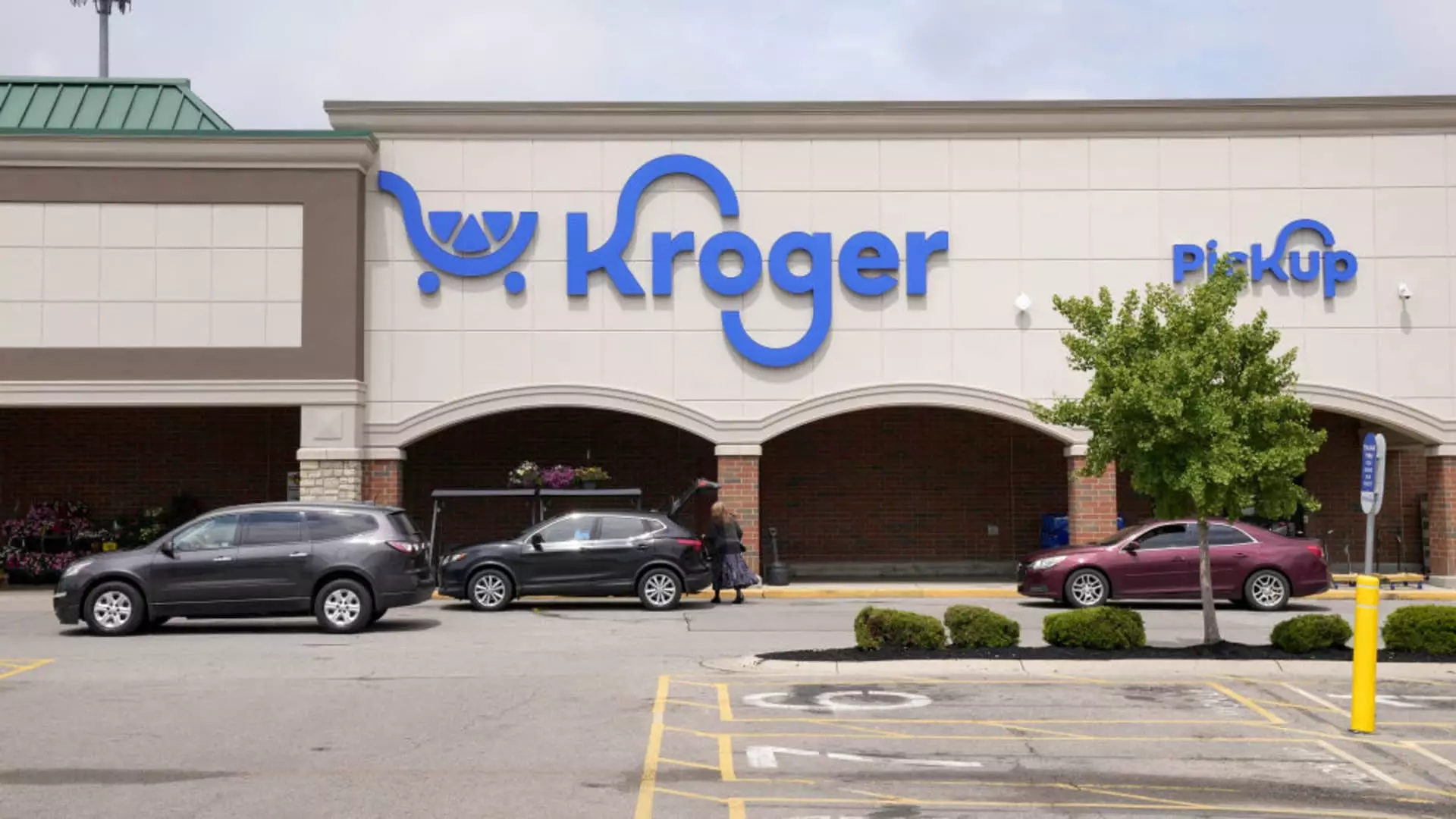In a world where thrifty shopping has become the norm, Kroger’s recent surge in stock price—jumping about 10%—is not just a reflection of a favorable market environment. It’s an emblem of the grocery giant’s strategic pivot towards the increasingly value-conscious consumer. Amid the backdrop of rising costs and inflationary pressures, Kroger has smartly repositioned itself to cater to shoppers who are more discerning about their expenses. By raising its full-year sales outlook and adjusting identical sales forecasts upwards, the company underscores a crucial shift in consumer behavior. As people opt for cheaper alternatives to dining out, the supermarket chain is stepping up to meet this demand with its store brands and discounted offerings.
Kroger’s commitment is evident; the company anticipates identical sales (excluding fuel) to climb between 2.25% and 3.25% year-over-year, surpassing earlier projections. This strategic refinement is not merely about numbers; it reflects an acute understanding of the current economic climate and consumer sentiment. The visible transition in consumer shopping patterns—favoring in-home meals over dining—and increased interest in private-label products are promising indicators of Kroger’s adaptive strategy. Yet, one wonders: will this be a mere blip in a fluctuating market, or does it signify a more enduring transformation in consumer habits?
Deciphering the Success Behind the Numbers
When examining Kroger’s fiscal first quarter, the figures narrate a tale of resilience. A net income of $866 million and an adjusted earnings-per-share of $1.49 have surpassed analysts’ expectations, confirming the supermarket’s robust operational execution. Despite an environment rife with economic uncertainty and intense competition from rivals like Walmart and Costco, Kroger’s penchant for value-centric offerings has positioned it favorably. The company’s digital sales channel, marked by a 15% increase, shows that its e-commerce strategies, although yet to be fully profitable, are gaining traction.
However, the question arises: how sustainable are these results? Past successes may illuminate a path forward, but they also create pressure for Kroger to sustain growth amidst evolving competition. With formidable competitors sharpening their pricing strategies, the real test lies ahead. Interim CEO Ron Sargent’s assertion of simplifying promotions and accentuating private label products is indeed a shrewd maneuver. But will this be enough in the face of inflationary pressures? As consumers navigate their financial limitations, Kroger’s ability to maintain its growth while managing tight margins will be crucial.
Navigating Legal and Leadership Turbulence
Kroger’s journey has not been free of turbulence; recent leadership troubles and legal woes have cast shadows over its strategic direction. The abrupt resignation of CEO Rodney McMullen and the ongoing legal skirmish with Albertsons regarding a controversial $25 million acquisition throw uncertainties into the mix. The company’s choice to appoint David Kennerley—a fresh face from PepsiCo Europe—signals an intention to invigorate its financial strategy. But, in periods of transition, how well can Kroger execute on its promises of growth and value?
As the company recalibrates its operations, the impending closure of about 60 underperforming stores could represent a decisive but risky move. The $100 million impairment charge is a stark reminder of the costs associated with reinvention. While deeming poorly performing storefronts for closure is a standard industry practice, the impact on overall brand loyalty and market perception looms large. The delicate balancing act between maintaining a broad physical presence and modernizing to meet e-commerce demands presents ongoing challenges.
Embracing Change in a Competitive Landscape
As the grocery business rapidly evolves, Kroger is also leaning heavily into health trends by enhancing its product lines, expanding offerings like the Simple Truth brand with new protein-packed items. This shift demonstrates an understanding of not just financial constraints but also evolving consumer interests in health and sustainability. As shoppers become more health-conscious, connecting them with wholesome, affordable options will be pivotal for long-term loyalty.
Nevertheless, the competition remains fierce, with rivals not only pursuing aggressive pricing strategies but also innovating in both product variety and customer experiences. Every promotional tactic must be carefully calculated to avoid alienating customers who might perceive price hikes. As tariffs loom globally, Kroger’s ability to keep upward price pressures at bay—through domestic sources—is commendable. However, in an era where even subtle increases can lead to significant shifts in consumer behavior, the attention must remain fixed on delivering genuine value.
In this evolving landscape, Kroger’s story is still being written. Their potential to thrive aligns with broader shifts in consumer preferences, but sustained success will hinge on their ability to navigate internal challenges and external pressures without compromise. The upcoming months may define whether Kroger solidifies its market position or falters amid the intense competition and economic volatility.

